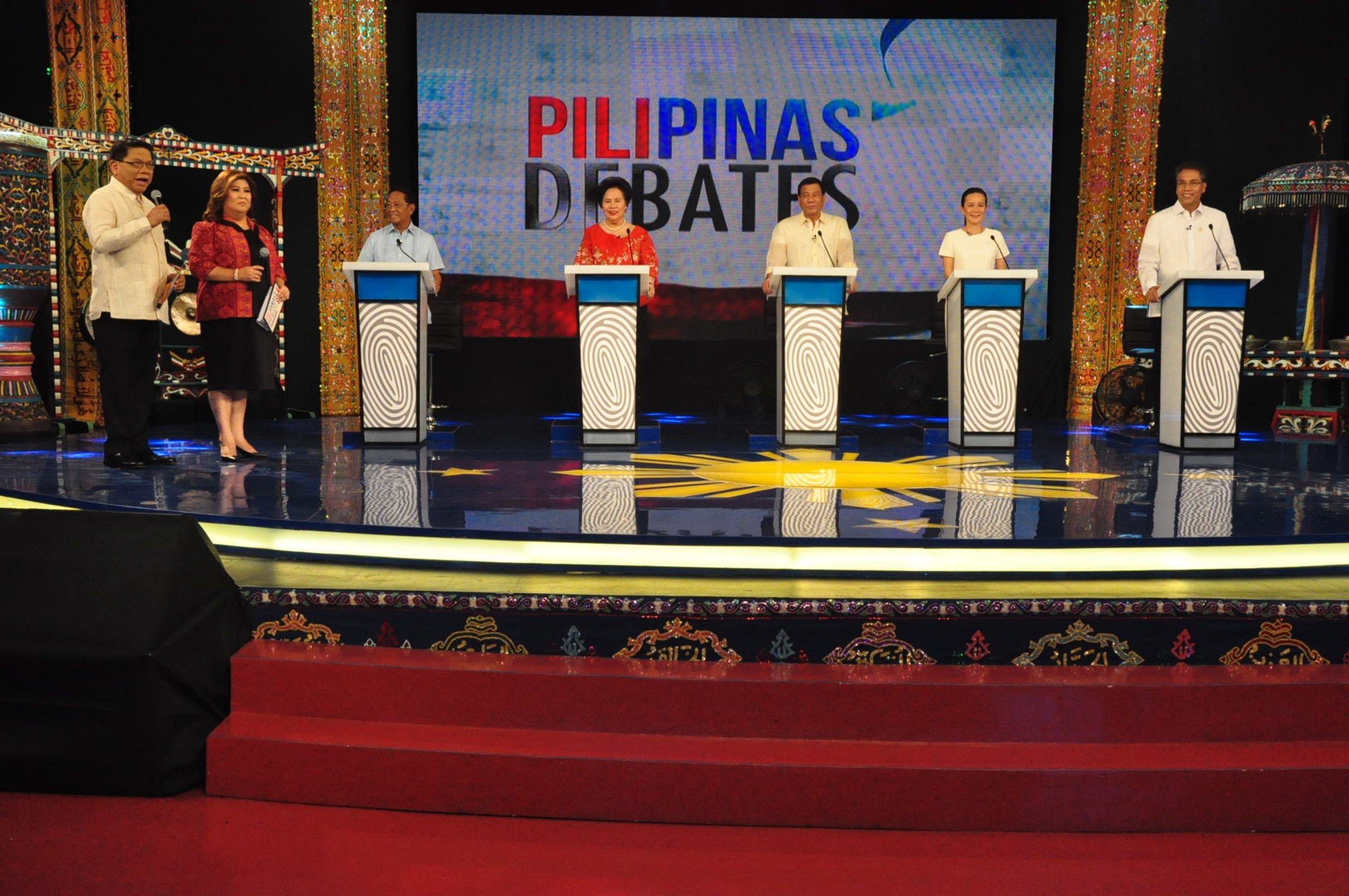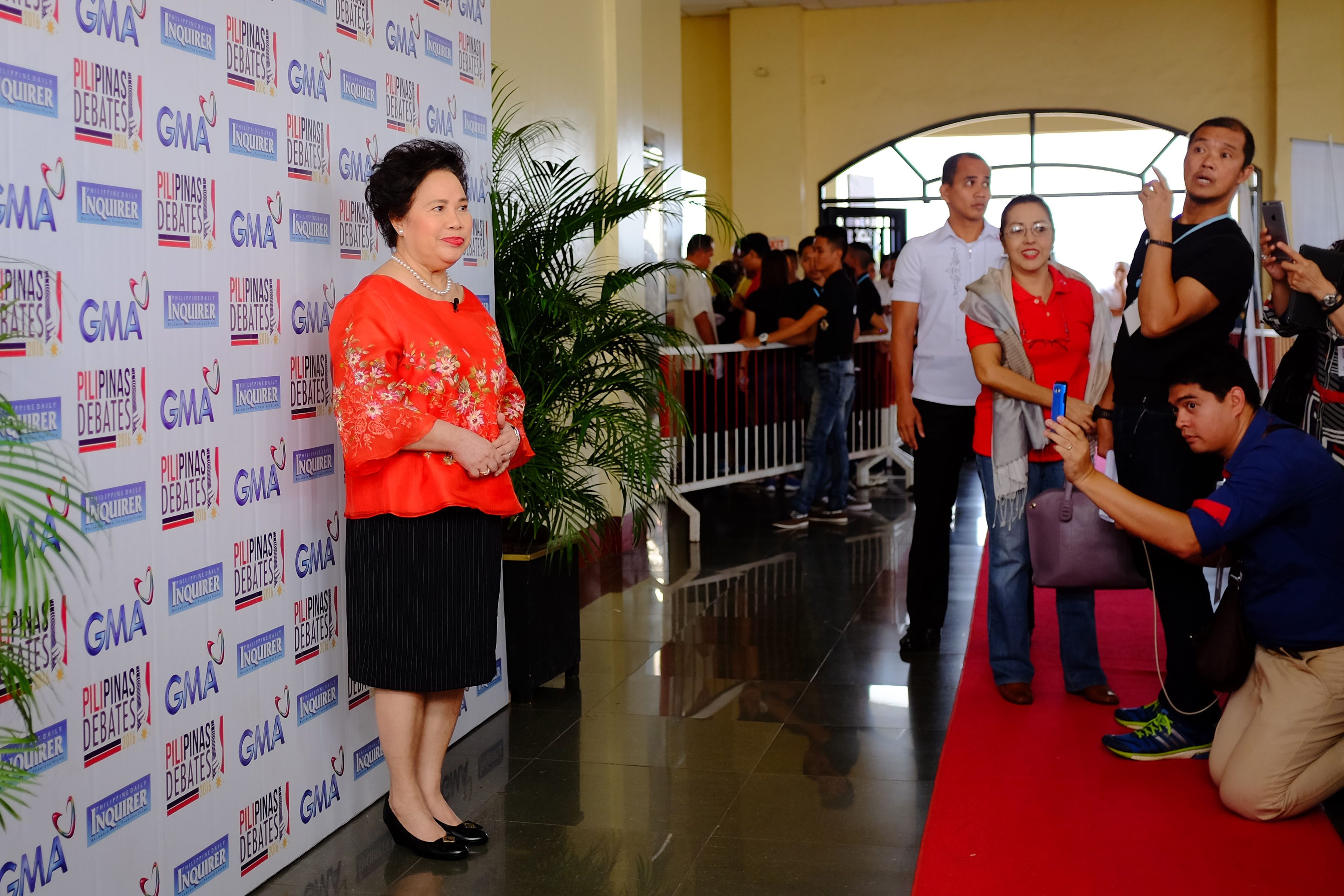SUMMARY
This is AI generated summarization, which may have errors. For context, always refer to the full article.

MANILA, Philippines – A lot of hype preceded the first presidential debate in Cagayan de Oro City late February and for good reason. It was the first Commission on Elections (Comelec)-sanctioned debate since the 90s, and the first to be held outside Metro Manila.
For the first time since the election season began, all 5 presidential candidates shared the stage at the Central University for a “debate” moderated by 3 journalists, aired over primetime television.
But like any first try, there will always hits, misses, bumps and detours along the way.
What was it like being in Cagayan de Oro during the historic first debate? Rappler takes you back to the days preceding, during, and following the February 21 debate.
Stranger in their own home
The GMA and Inquirer-sponsored debate didn’t exactly start off on a good note, at least as far as Cagayan de Oro-based media were concerned. There was uproar over the perceived exclusivity of the event and the limited access given to other media organizations, those from the city included.
Members of the Cagayan de Oro Press Club threatened to boycott the event because initially, only 10 slots were given for local editors and reporters to enter the main debate venue.
The list would eventually expand, but that wouldn’t be enough to unruffle the feathers of media practitioners based in the city. Some attended the debate, but under protest. A handful skipped the immediate vicinity of the event entirely and opted instead to go around the city as the 5 candidates threw one verbal punch after another.
The debate content itself left locals – sectoral representatives in particular – wanting.
WATCH: Sights and sounds outside Capitol Univ ahead of today’s Pres debate #PHvote https://t.co/PPuqrXzxsn
— Bea Cupin (@beacupin) February 21, 2016
During the two-hour debate, over 48 minutes were used up by ads, leaving roughly 55 minutes of talk time for all 5 candidates.
Still, the initial let-down didn’t stop supporters from rallying the troops and painting Cagayan de Oro white, blue, orange, red, and yellow (the campaign colors of the 5, in case that wasn’t clear).
Outside the venue, it felt more like a fiesta than the prelude to a verbal (and sometimes, academic) square-off. There were banners, jingles, caravans of supporters, and yes, a marching band.
But it was the debate’s format, and subsequent time limits, that would later prove to be another point (high or low, depends on your perspective) in the entire event.
Miss Universe answers?
Candidates were given a minute for their opening statements, a minute and a half to answer questions from the moderators, a minute to rebut another candidate’s answer, and 30 seconds for a final reply to a rival’s rebuttal.
Given the 3 rounds, each candidate had only roughly 11 minutes of talk-time. The rest of the two hours were devoted to ads, introductions for the rounds, and the opening and closing spiels for the moderators.
While it worked for the first round, which focused on specific issues against the candidates, it proved lacking when the second and third round came and more complex issues – poverty, development, and Mindanao-specific concerns – were on the table.
At least one campaign lobbied for longer time allotments for answers and rebuttals, and it looks like organizers of the 2nd debate in Cebu City have adjusted.
How well did your candidate do?
Opening statements will be another thing to look forward to in the Cebu leg of the Comelec debates.
During the first iteration, most (if not all) candidates started out by explaining why they were running or who they were. In contrast, administration candidate Manuel Roxas II came out with guns blazing, hitting his opponents with not-so-veiled rhetorical questions.
Will – or should – the candidates have the same strategy this time around?
The short-, mid-, and long-term effects of the debate on a candidates’ numbers in opinion surveys are slowly beginning to show (although you’ll be hard-pressed to find a campaign team unveil theirs on-record).
Post-debate polls put Senator Grace Poe, whom Rappler judged to have won 2 out of 3 rounds, ahead of her rivals. Her numbers also grew in the Pulse Asia and Social Weather Stations surveys held after the debate.
Roxas, whom Rappler judged to have won the first round, also saw a spike in his opinion poll numbers.
What debate?
But another thing many felt was lacking in the Mindanao leg was the feel of an actual debate. “Speed dating” was how sociologist Nicole Curato described it.
Candidates barely entered into a verbal tussle, save for a few seconds of tension between administration candidate Roxas and political nemesis Vice President Jejomar Binay.
If there was a group of people that felt the un-debate-ness of the debate, it was the journalists watching the debate unfold inside the media center.

Cheers and chatter would actually erupt every time a candidate confronted – or at least came close to – another candidate.
The rest of the time? “Ano ba ‘yan, mag debate na kayo (What’s going on, start debating already),” were common lines inside the Capitol University.
The problem, Curato pointed out, was that candidates weren’t matched “based on policy difference.”
At one point, during the round on agriculture and development, only Senator Miriam Defensor Santiago explicitly hit the plans of another candidate (Roxas), calling them “promises in the sky.”
BTS: Duterte juts happens to pass by during Mar Roxas chance interview https://t.co/rCGm2Ek06y
— Bea Cupin (@beacupin) February 21, 2016
The feisty senator, who will be skipping the Cebu leg, would made the same quips for most, if not all, of her rivals.
Lack of differences in policy were evident when Davao City Mayor Rodrigo Duterte said during his “rebuttal” of Roxas’ plans for agriculture: “I cannot rebut. Yeah, I cannot rebut what he has said because it’s all true. Gusto ko ngang kopyahin, kung papayag siya eh, idagdag ko na lang yung akin (I want to copy his plans if he lets me, I’ll add it to my own plans).”
To be sure, candidates did have a chance to confront each other but the time limit reduced those to soundbites and quick quips.
The format for the Cebu debate will hopefully allow for real debate – over policy, positions, and implementation – this time around. The second debate will have a panel of journalists asking candidates questions and another segment where candidates pick a rival to grill.
Hopefully, this will mean less dull moments at the media holding area – and in vieiwing parties all around the country. – Rappler.com
Add a comment
How does this make you feel?





There are no comments yet. Add your comment to start the conversation.